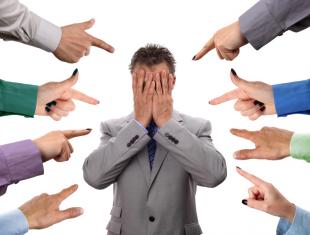Today is the UN’s International Day for the Elimination of Racial Discrimination. While this year’s theme “The Role of Leaders in Combatting Racism and Racial Discrimination” is focused on political leaders, it also applies to your workplace! You can be a leader against harassment and discrimination in your office. You may understand the basics of harassment and it’s legal implications, but there’s one grey area getting much more attention recently you may not have even heard of: microaggressions.
Microaggressions, as defined by Columbia University’s Derald Wing Sue, Ph.D., are common verbal, behavioral, and environmental indignities, whether intentional or unintentional, that communicate hostile or negative slights to marginalized groups; perpetrators of microaggressions are often unaware that they engage in such interactions when they interact with minorities. Sue describes situations in which microaggressions are at play:
- A White woman holds her purse more tightly when passing a Black man on the sidewalk
- A third generation Asian American man is complemented on speaking such good English
The list goes on. As you can see, many of these actions are subtle and not openly hostile acts. How can you avoid making these mistakes in your workplace to keep it a safe and positive place to work?
There are three types of racial microaggressions described by Sue to be aware of and avoid:
- Microassaults: Conscious and intentional discriminatory actions: using racial epithets, displaying White supremacist symbols, preventing one’s son or daughter from dating outside of their race.
- Microinsults: Verbal, nonverbal, and environmental communications that subtly convey rudeness and insensitivity that demean a person’s racial heritage or identity. Example: an employee asks a co-worker of color how he/she got his/her job, implying he/she may have landed it through an affirmative action or quota system.
- Microinvalidations: Communications that subtly exclude negate or nullify the thoughts, feelings or experiential reality of a person of color. For instance, people often ask Latinos where they were born, conveying the message that they are perpetual foreigners in their own land.
The problem stems from the Catch-22 situation that microaggressions create; if the victim of the microaggression calls out the perpetrator, they may be labeled as paranoid or told they are “too sensitive,” but if they do nothing, the internal turmoil grows and they may become depressed or dissatisfied (and in the case of the workplace, leave their job, leading to high turnover). Microaggressions are powerful because they are invisible—you may not always recognize them as a perpetrator or victim.
Action Items: What You Can Do
- Set expectations for all employees, regardless of race, gender, sexual orientation, disabilities, or background.
- Do not expect a coworker to be the voice of their entire group.
- Don’t make a comment about a minority group and call out a particular coworker to contribute just because you think they are part of that group.
- Never ask questions like “What are you?” or “Where are you really from?”
Now that you know how to avoid microaggressions, apply these tips to your workplace and become a leader against harassment.
Keep in mind that microaggressions are not exclusive to racial discrimination. They are also seen in issues of sexism and heterosexism. Get the training you need to keep harassment of all kinds out of your workplace. OpenSesame offers training on a variety of harassment and discrimination topics including the following courses:
- How to Prevent and Respond to Bullying at Work
- Working Well with Everyone: The Mistake of Stereotyping
- Discrimination-Free Workplace
- Harassment Prevention
- Sexual and Other Unlawful Harassment
Read more about racial microaggressions on Psychology Today and from the American Psychological Association. Fordham University also has a page on microaggressions as a resource for professors.






